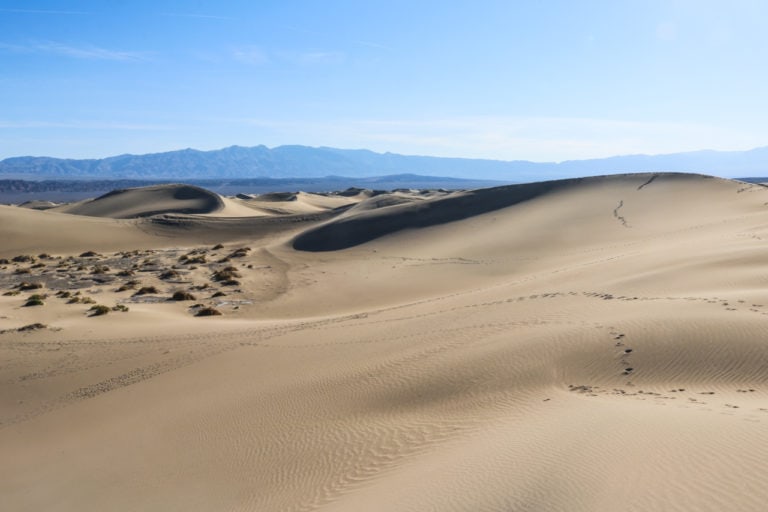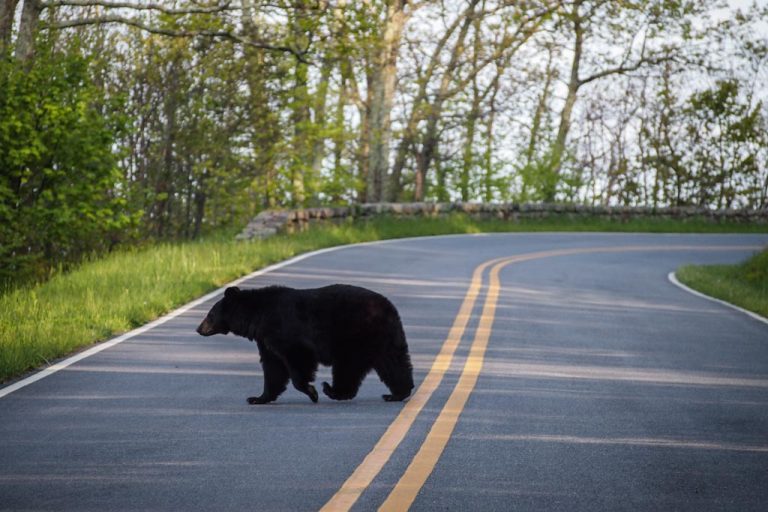See Spectacular Subterranean Wonders at These 10 National Park Caves
Besides such famous places as Yellowstone, the Grand Canyon and Death Valley, and iconic buildings like the Statue of Liberty and the San Antonio Missions, the National Park Service (NPS) also preserves an amazing diversity of caves.
In fact, the National Park Service system encompasses more than 4,700 caves. Yes, you read that right! I’ll even repeat it: there are over 4,700 caves in the national parks system.
At least four of those national park caves are longer than 135 miles, while many are so complex and mazelike they’re only accessible to expert speleologists. Additionally, the caves in the national parks of the United States also include some of the world’s longest, deepest and rarest.
Many of these fascinating subterranean worlds are home to entire ecosystems, sometimes completely shut off from the outside. They harbor extraordinary underground landscapes, mesmerizing geological formations, and unique fauna and flora.
Several of the greatest caves in America’s national parks and monuments are open to the public. You can explore and immerse yourself in them on ranger tours and/or self-guided tours.
10 National Parks and Monuments With Spectacular Caves, Caverns and Lava Tubes
Solution Caves in the National Parks System
By far the most common type of caves in the national parks, solution caves form through both physical and chemical erosion. Water always plays a major role in the formation process.
Specifically, water dissolves “rock along and adjacent to joints (fractures), faults and layers in the rock”, the National Park Service explains.
“Solution caves are most often found in rock types such as limestone, marble, dolomite (both close relatives of limestone), gypsum and halite, and are associated with karst landscapes.”
Solution caves are the classic cave type you might imagine when thinking of caves. They consist of passageways, subterranean chambers, rooms and halls, and often feature the well-known stalactites and stalagmites.
Depending on the dominant type of rock, solution caves can be limestone caves, marble caves, dolomite caves, gypsum caves or halite caves. All have their own typical cave features, patterns and formations.
You can find more information about solution caves in the national parks here on the NPS website.
Carlsbad Caverns National Park, New Mexico
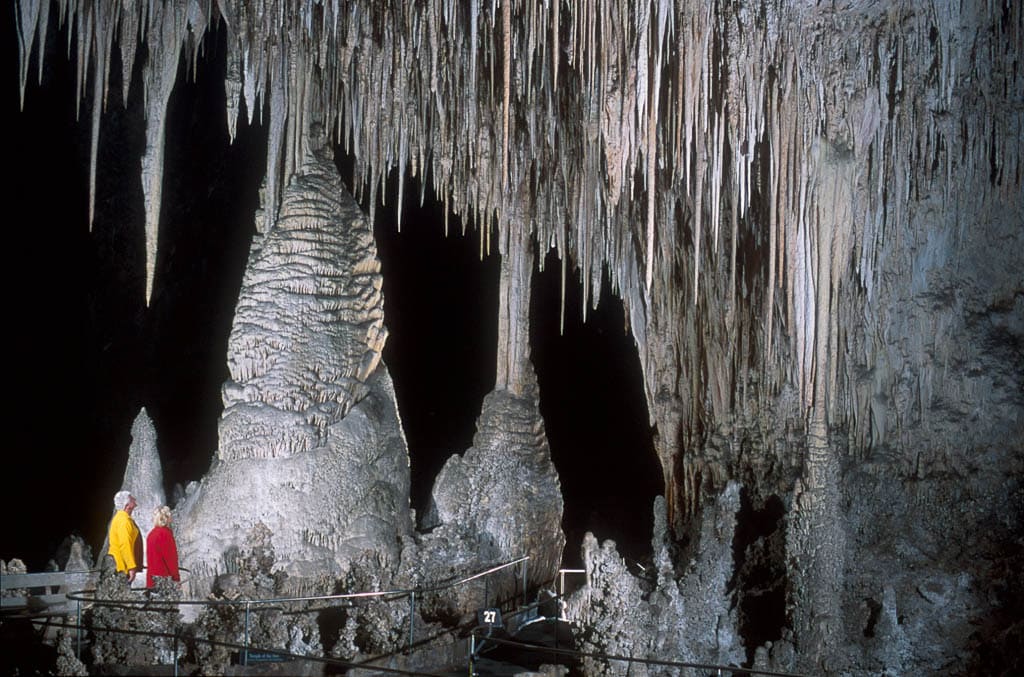
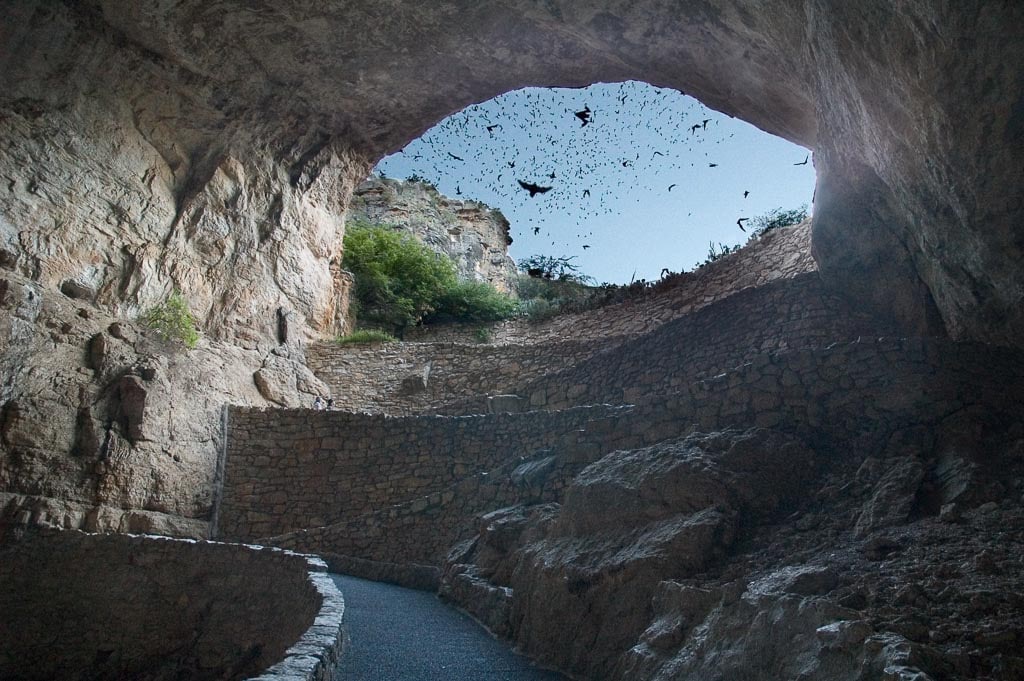
Named after the huge Carlsbad Cavern, which is also the park’s best-known cave, Carlsbad Caverns National Park near El Paso preserves an area of over 100 caves in the Guadalupe Mountains.
You can explore this spectacular national park cave at your own pace on two different hiking trails. The 1.25-mile Natural Entrance Trail runs steeply down into the cave, a 750-feet descent, and past extraordinary formations like Devil’s Spring, Iceberg Rock and the Whale’s Mouth.
The star attraction at Carlsbad Caverns National Park, however, is the Big Room Trail. Relatively flat and 1.25 miles long, this popular hiking trail allows you to experience the Big Room, the largest single cave chamber by volume in America.
On the Big Room Trail, you’ll see amazing mineral cave formations in all sizes and shapes, as well as jaw-dropping subterranean landscapes. Additionally, Carlsbad is renowned for its huge colony of bats. It even has its own Bat Flight Program.
Also in Carlsbad Caverns National Park, the Lechuguilla Cave comprises 150 miles of known passageways and chambers. It is the fourth-longest cave in the United States and in the top ten of longest caves in the world.
Although only accessible to scientists, researchers and exploration teams, it’s worth mentioning for its numerous unusual speleothems, some of which aren’t found anywhere else on Earth.
Look for gypsum hairs, huge soda straws, cave pearls, massive gypsum chandeliers and hydromagnesite balloons.
This exceptional diversity of underground features, the sheer size of the system and individual rooms, as well as rare forms of life, such as rock-eating bacteria, is why Carlsbad Caverns is a UNESCO World Heritage Site.
The World Heritage Centre praises these caves “not only for their size but also for the profusion, diversity and beauty of their mineral formations. Lechuguilla Cave stands out from the others, providing an underground laboratory where geological and biological processes can be studied in a pristine setting.”
Jewel Cave National Monument, South Dakota
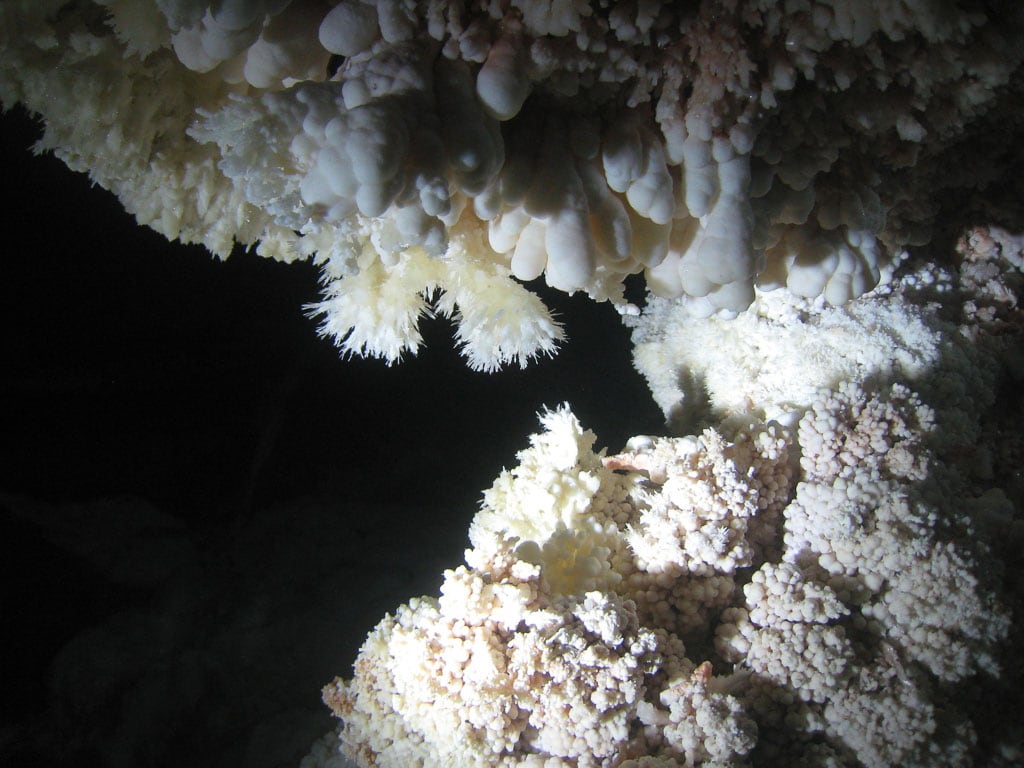
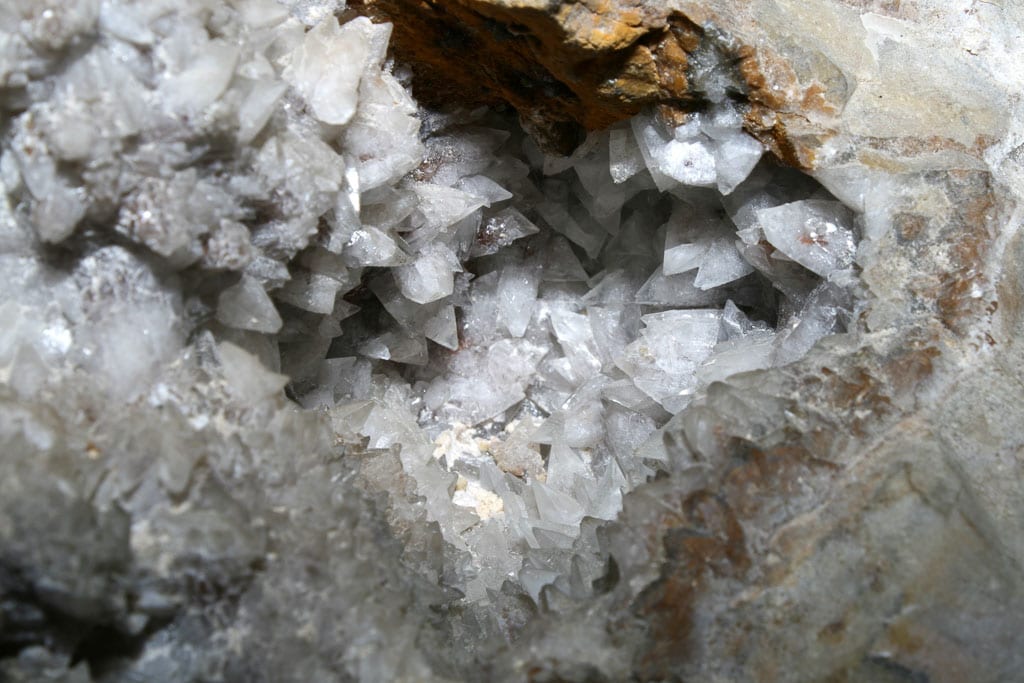
“A jewel in the National Park Service”, as they themselves call it, Jewel Cave National Monument protects the third-longest cave in the world.
This sprawling cave system encompasses more than 200 miles of surveyed and mapped passages. It’s a subterranean wilderness that’s essentially unparalleled on the planet.
Created by acidic groundwater that slowly circulated for millions of years—rather than carved by underground rivers like many other caves—Jewel Cave harbors a spectacular array of different speleothems.
A tour of Jewel Cave gets you up-close to everything from gypsum formations and hydromagnesite features to calcite crystals, which can resemble sparkling jewels when lit up. The so-called Scenic Tour is the best option to see these remarkable attractions.
Mammoth Cave National Park, Kentucky
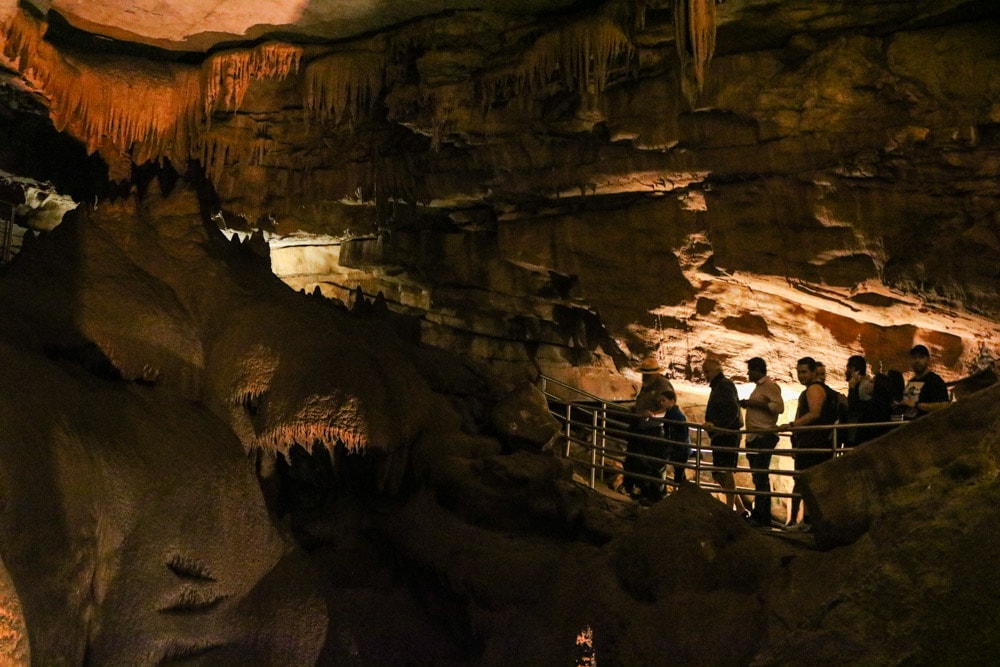
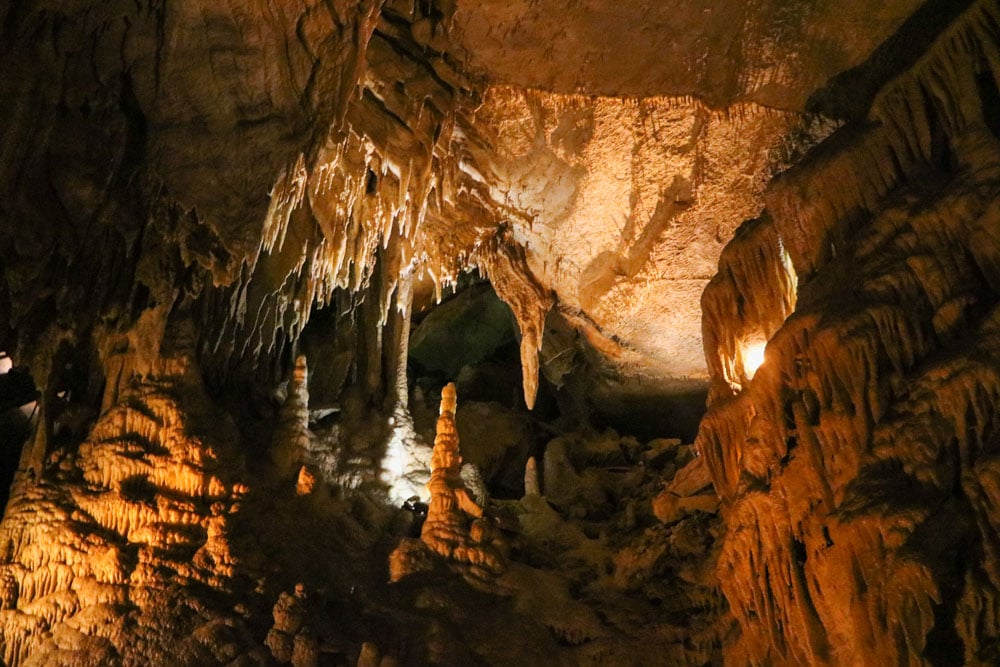
An absolute superstar in the world of American caves, Mammoth Cave encompasses the world’s longest known cave system.
Doing its name more than justice, this gigantic system of subterranean passageways, chambers, halls and tunnels is more than 400 miles long. Almost incredibly, it’s almost twice as long as the second-longest cave on Earth, which is Mexico’s Sac Actun.
This geological gem deep below the peaceful scenery of rural Kentucky is of national and even global importance. Mammoth Cave became a national park in 1941 and was designated a UNESCO World Heritage Site forty years later.
Additionally, it’s also an official International Biosphere Reserve, indicating that there’s a wealth of biodiversity to be found here, both above and below ground.
Mammoth Cave National Park not only protects the whole cave system, but also the surface area—forests, rivers and hills. After all, conditions down below in the cave depend heavily, if not exclusively, on what happens on the land above.
The sheer magnitude of Mammoth Cave is reflected in the number of different cave tours you can do.
There are more than ten to choose from, of varying lengths and durations, showcasing the cave’s many different corners, features and underground landmarks.
Oregon Caves National Monument, Oregon
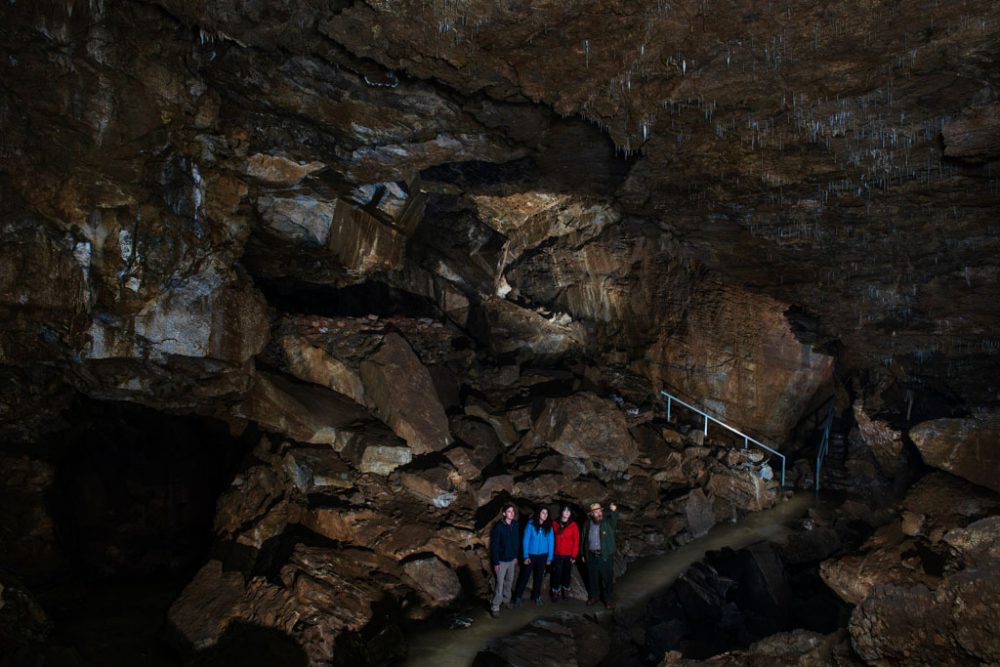
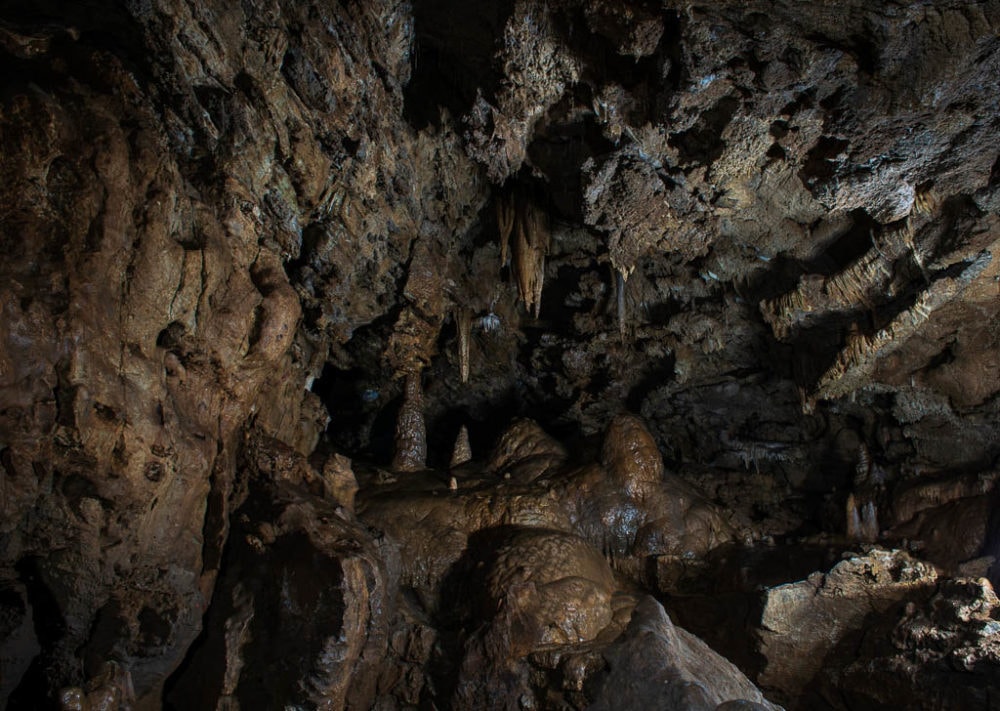
Located deep within southern Oregon’s Siskiyou Mountains lie the renowned Oregon Caves, often combined with a visit to nearby Crater Lake National Park.
These “Marble Halls of Oregon” are home to spectacular marble formations and passageways, a major tourist attraction in this remote part of the Pacific Northwest.
Cave tours are the obvious top attraction here. They range from Discovery Cave Tours and Candlelight Cave Tours to Kids and Family Tours. Experienced speleologists can go on off-trail cave explorations, too.
Timpanogos Cave National Monument, Utah
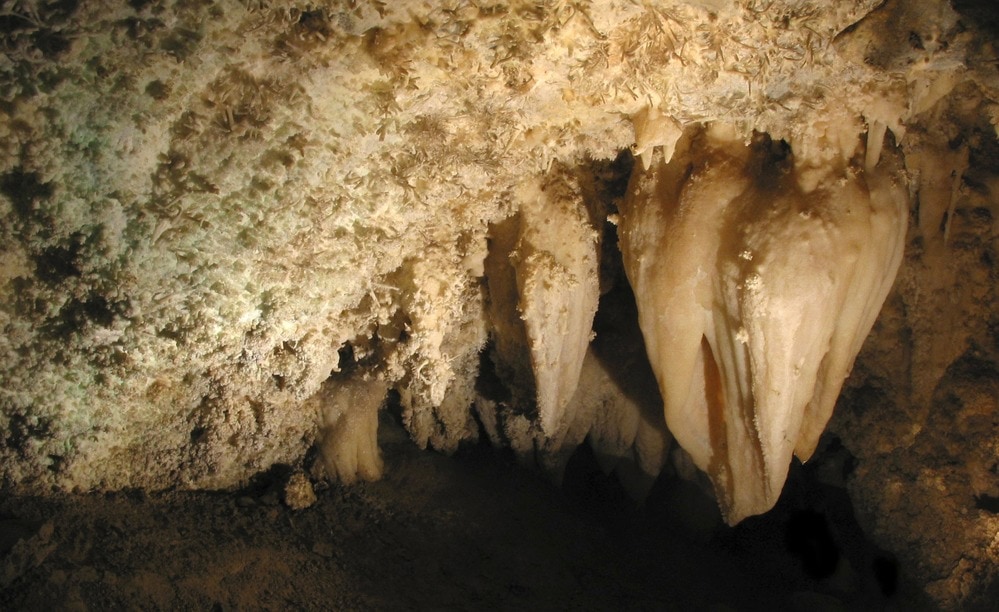
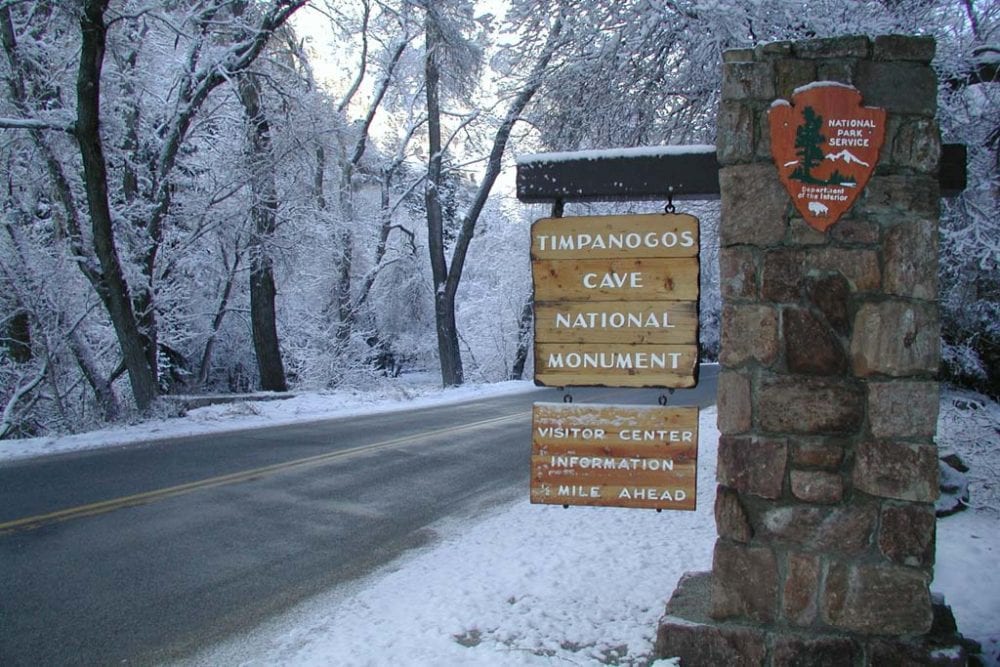
The closest National Park Service site to Salt Lake City, Timpanogos Cave National Monument is only 40 minutes south of the city center. It protects the Timpanogos Cave Historic District, as well as a beautiful cave system underneath Mount Timpanogos.
The only way to visit the caves and see their stunning helictites is on guided cave tours, which last about an hour. Note, however, that it takes a steep 1.5-mile hike to get to the cave. The round-hike and cave tour is approximately three hours.
Wind Cave National Park, South Dakota
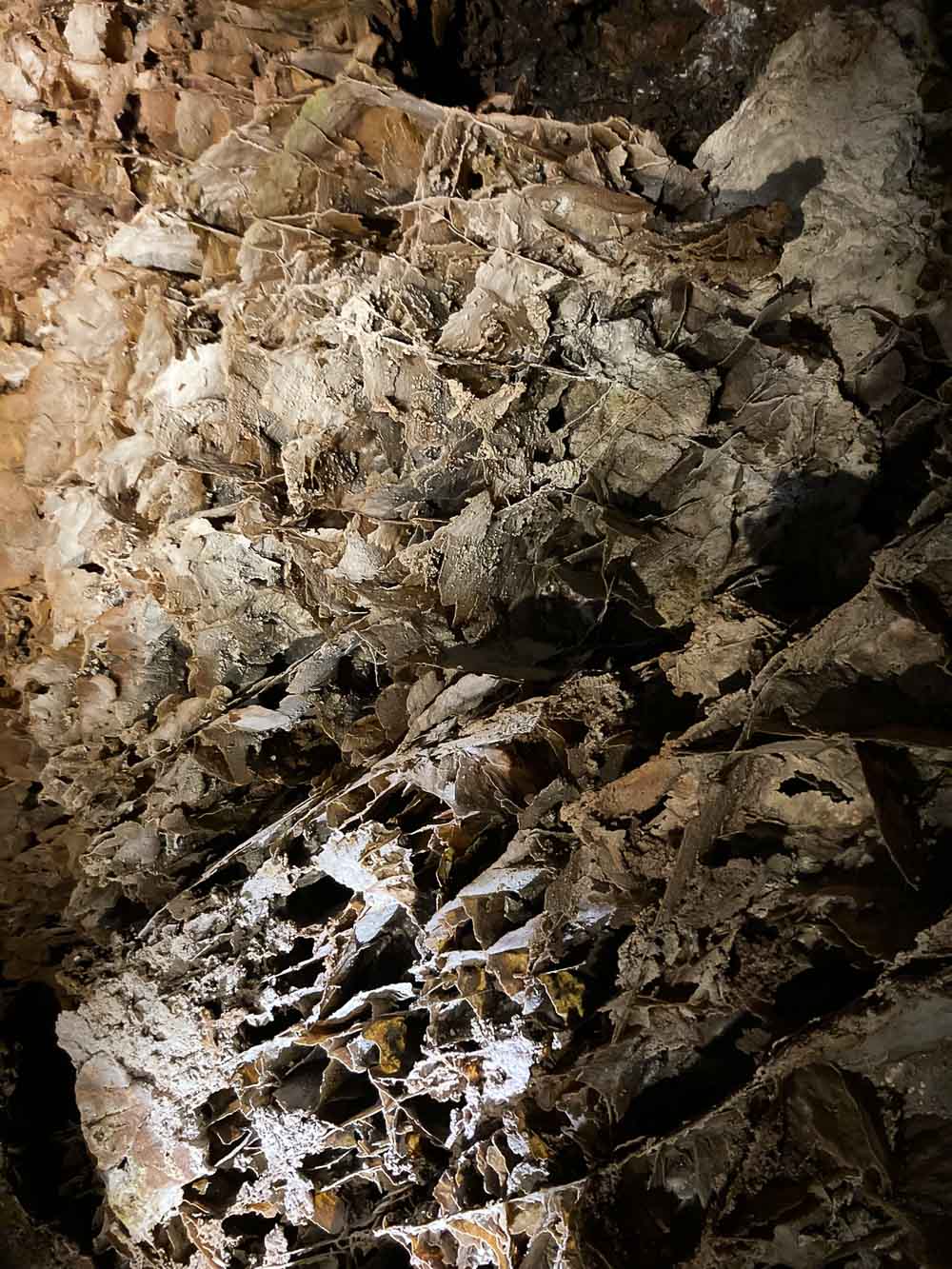
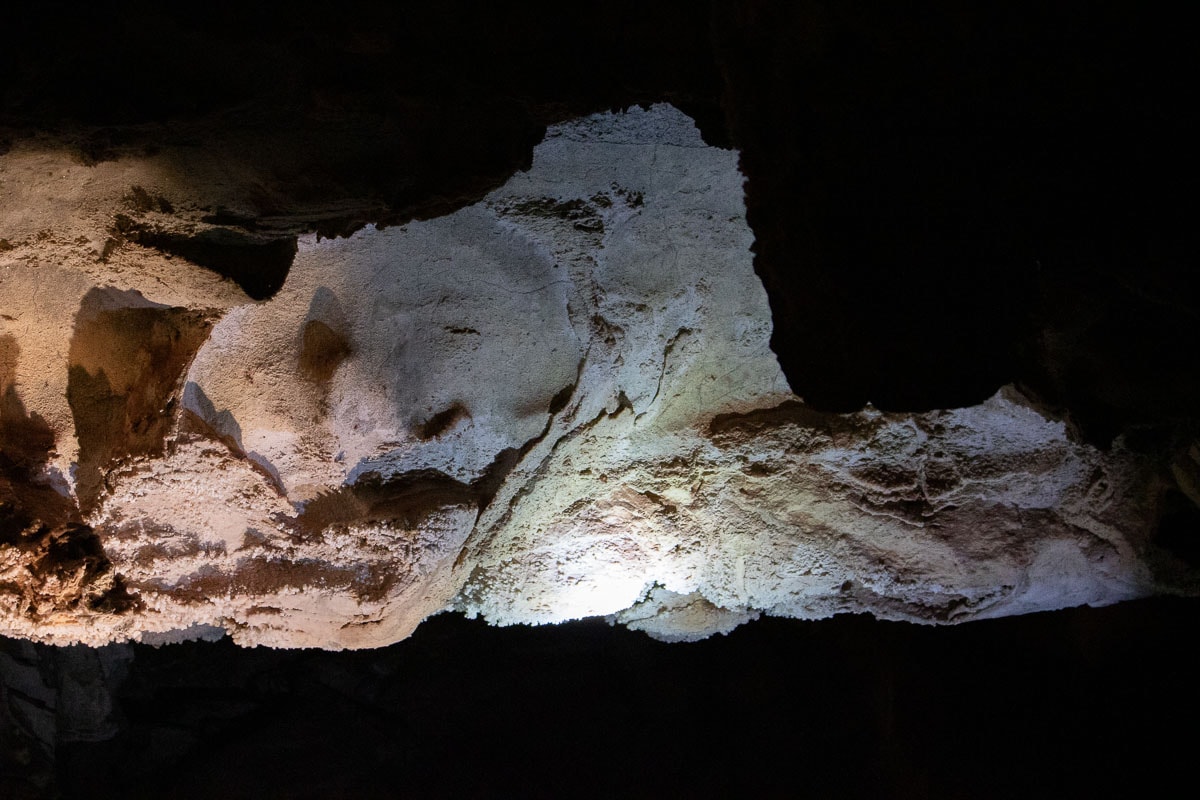
Deep below the pristine prairie of South Dakota, on which bison and elk roam, lies Wind Cave, the namesake of one of the oldest national parks in America.
In fact, this was the very first cave to become a national park, not only in the United States but in the world—established by Theodore Roosevelt in 1903.
The cave got its name for the barometric winds at its entrance. Its underground passageways and rooms are home to a few exceptional geological formations, such as cave popcorn, frostwork and, especially, a huge amount of boxwork.
Boxwork consists of thin calcite blades protruding from the ceilings and walls of caves. Together, they form a honeycomb pattern, or “boxes.” This extraordinary geological formation is abundant at Wind Cave National Park, but extremely rare—or still undiscovered—elsewhere in the world.
Additionally, Wind Cave is also super-big. With more than 150 of explored passageways, it’s the world’s seventh-longest cave system. It’s the third-longest cave in the United States, after Mammoth Cave and Jewel Cave.
You can see Wind Cave’s stunning cave popcorn, frostwork and boxwork on a few different guided tours. Aboveground, there are several awesome things to do in Wind Cave National Park, too, from wildlife viewing to hiking and scenic drives.
Other National Park Service Sites With Solution Caves
- Big Bend National Park, Texas
- Buffalo National River, Arkansas
- Coronado National Memorial, Arizona
- Cumberland Gap National Historical Park, Kentucky
- Great Basin National Park, Nevada
- Great Smoky Mountains National Park, North Carolina and Tennessee
- Ozark National Scenic Riverways, Missouri
- Russell Cave National Monument, Alabama
- Sequoia and Kings Canyon National Parks, California
Lava Caves and Tubes in the National Parks System
When thinking of a typical cave, many people imagine underground places made of limestone, featuring dripping water and the classic stalactites and stalagmites. There are, however, several other types of caves in the national parks system.
One such type are lava caves or tubes. According to the National Park Service, these volcanic caves are probably the second most common cave type in the parks.
The formation of lava tubes is a pretty straightforward process. When lava flows down a slope—essentially a thousand-degree river of molten rock—its upper part, the part in contact with the air, cools off, solidifies and thickens.
The lava, however, keeps flowing below that crust until the eruption stops. When all lava has flowed out, a lava tube remains.
Although fire created these caves, they’re often in cold, high-altitude areas where conditions are excellent to form and maintain amazing ice formations. Some lava caves are also home to “lavacicles”, which resemble stalactites.
Unsurprisingly, all national parks with lava caves are in the West, which is where America’s volcanic parks are located, too.
From the volcano-dotted Cascade Range in the Pacific Northwest to volcanic hotspots around Yellowstone and in Hawaii, you can hike through lava tubes in several National Park Service units.
You can find more information about lava tubes and caves in the national parks here on the NPS website.
Craters of the Moon National Monument, Idaho
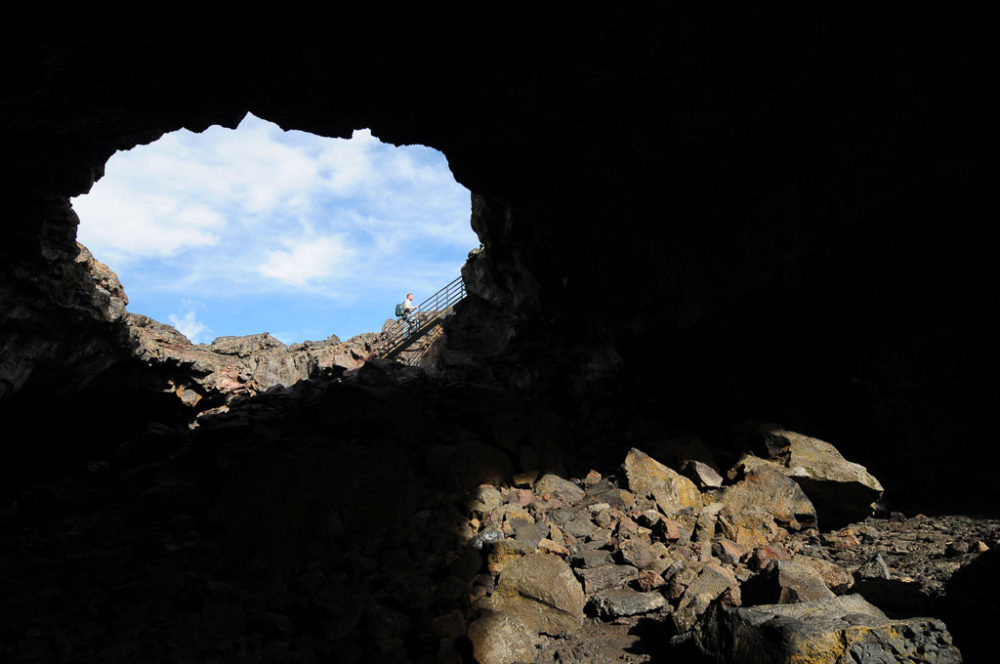
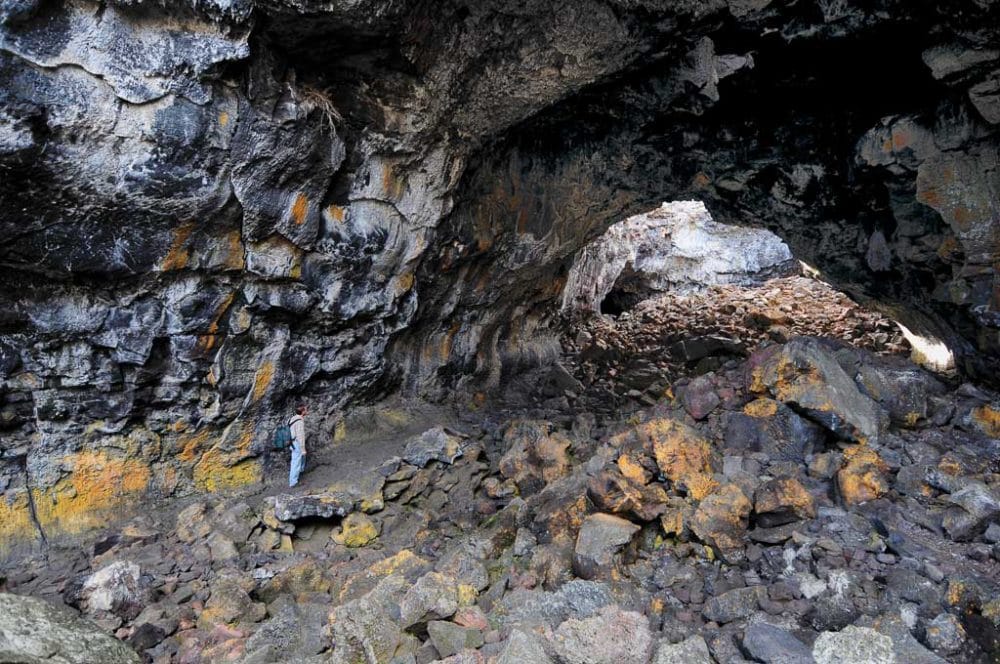
Preserving a vast landscape characterized by lava flows, cinder cones and other volcanic features, Craters of the Moon National Monument is an otherworldly place to visit.
One of the most remarkable attractions in this park in southern Idaho are its lava caves, formed by hot rivers of molten rocks that flow below the surface, as I explained above.
Four lava caves are open to the public in the Cave Area—Dewdrop, Boy Scout, Beauty and Indian Tunnel—and accessible via a 0.8-mile trail across the lava flow. Craters of the Moon’s many other caves are closed to protect sensitive populations of bats and other wildlife that find refuge in them.
To hike in the caves of Craters of the Moon, you need a free permit, which you can pick up at the visitor center.
Hawai’i Volcanoes National Park, Hawaii
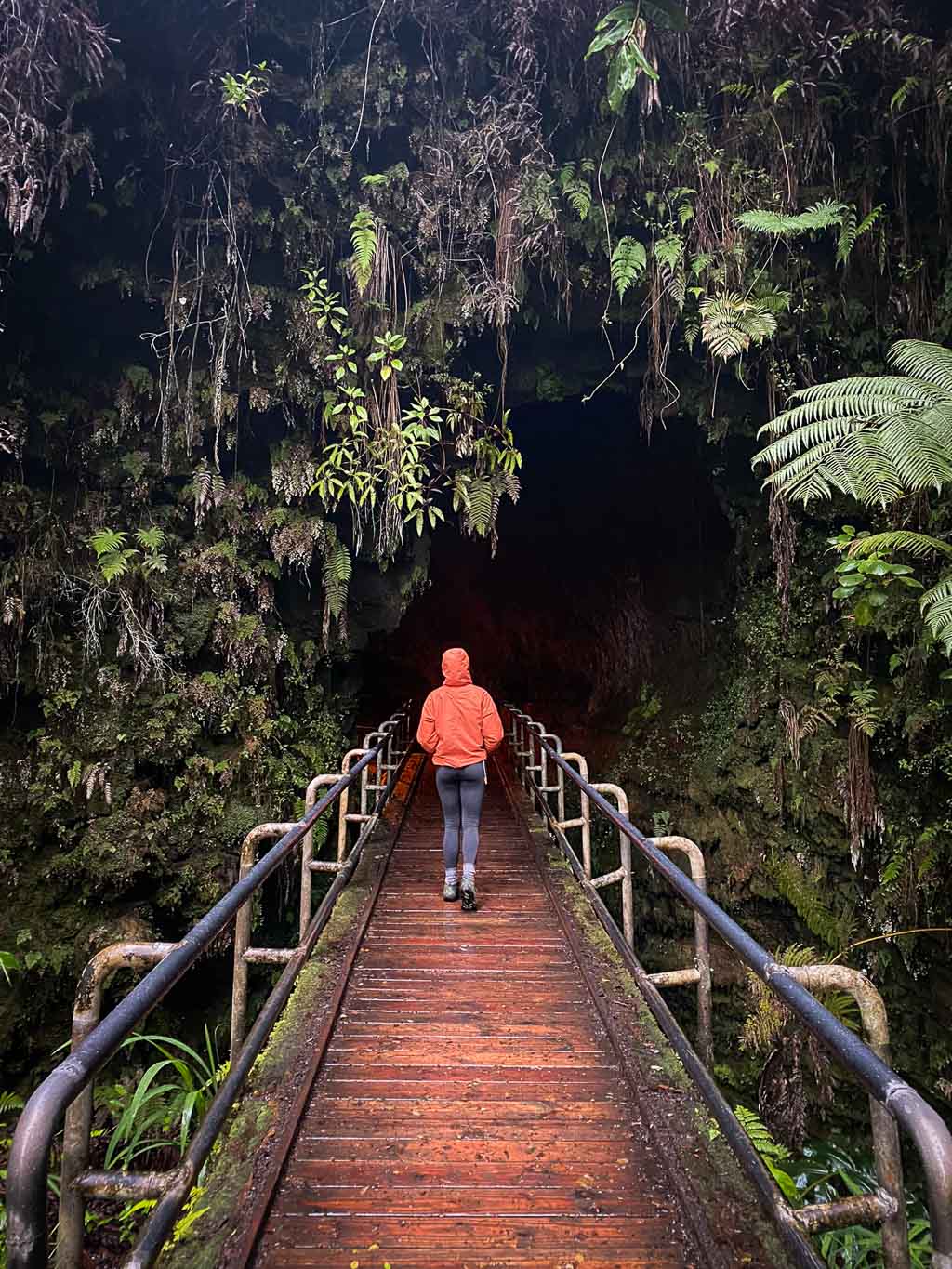
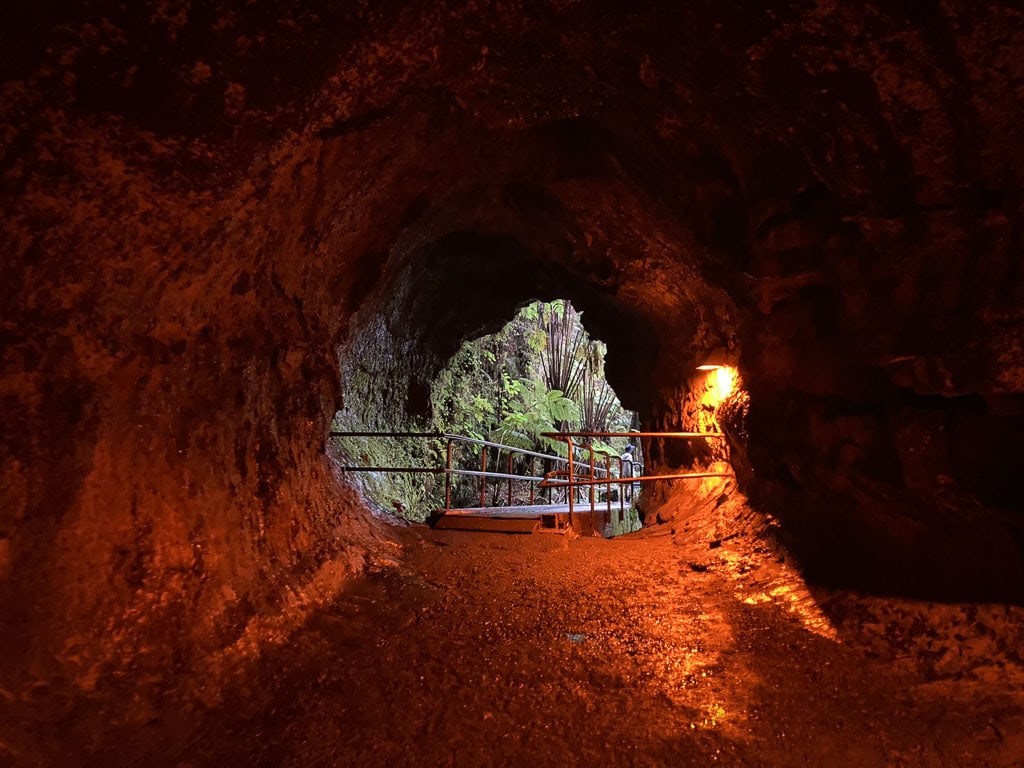
The Hawaiian Islands are the very result of volcanic action, more specifically lava flows. Created by volcanoes, the islands are home to vast networks of lava tubes. Several of those are within Hawai’i Volcanoes National Park on the Big Island of Hawaii.
In addition to being of geological interest and natural importance, these Hawaiian lava tubes are also culturally significant.
To Native Hawaiians, they offered a place to shelter, hide from enemies, store food and find freshwater, which could be difficult to find on the Big Island. Some lava tubes also served as burial sites.
Hawai’i Volcanoes National Park is home to numerous lava tubes and caves. Its Kazumura lava tube system, for example, is within the 500-year-old Ailā‘au lava flow of Kīlauea and over 40 miles in length. It’s considered to be the longest lava tube cave in the world.
There’s only one lava tube that’s accessible to visitors at the national park, though. But it’s a stunner.
Nāhuku, also known as the Thurston Lava Tube, is a 1.5-mile roundtrip hike from the Kīlauea Iki Overlook. Alternatively, you can also get there on a 6-mile roundtrip hike from Devastation Trailhead. It’s easily one of the top attractions in Hawai’i Volcanoes National Park.
Depending on the time of the day, or the lava tube experience you’re looking for, you can hike through Nāhuku in pitch-blackness or in artificial lighting. The lava tube is lit up from 8 am to 8 pm every day.
Lava Beds National Monument, California
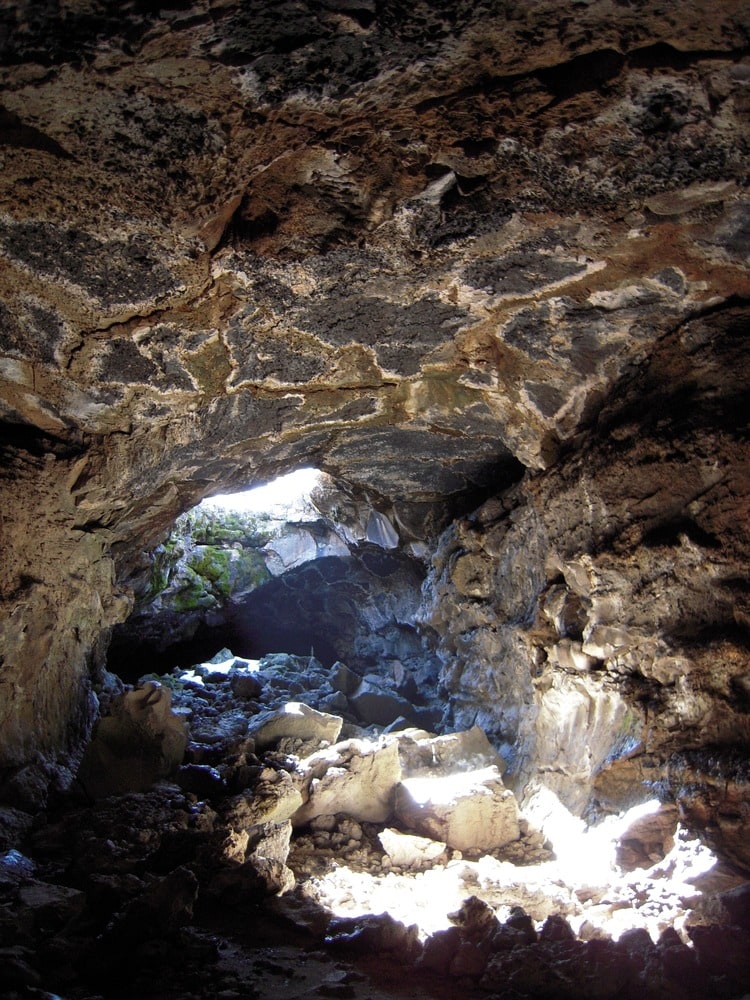
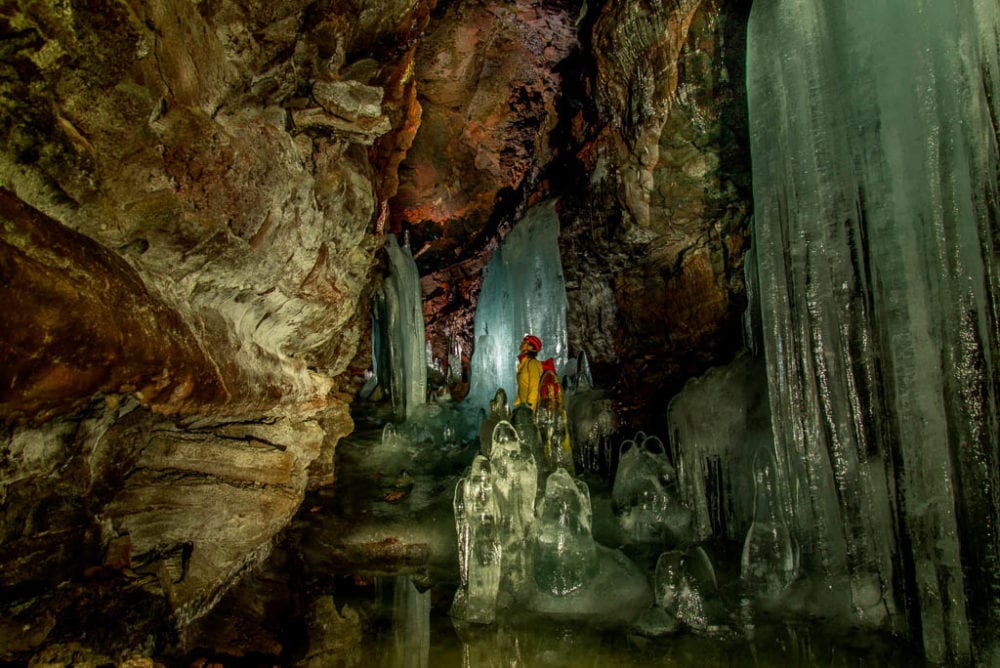
Located just east of the axis of the Cascade Volcanic Arc, Lava Beds National Monument encompasses the northeastern flank of the enormous Medicine Lake Volcano. Covering over 850 square miles, it’s one of the largest volcanoes in the Pacific Northwest.
Volcanic eruptions have occurred on and off for 500,000 years here. Unlike Mount St. Helens or Lassen Peak, however, these eruptions were fairly gentle, covering the flanks of the volcano with layer after layer of basaltic lava. These geological events have created a landscape of various volcanic features.
At Lava Beds National Monument, you’ll find no fewer than 800 caves. The majority of the developed caves are along the 2-mile Cave Loop road. The only lighted cave in Lava Beds, Mushpot Cave is a short walk from the visitor center.
There are numerous other developed caves, too, classified from least to moderately to most challenging. If cave tours are available, a visit to the spectacular Crystal Ice Cave is a must-do.
Other National Park Service Units With Lava Tubes and Caves
- El Malpais National Monument, New Mexico
- Mojave National Preserve, California
- Sunset Crater National Monument, Arizona
Talus Caves in the National Parks System
Although prevalent throughout the United States, especially in the Appalachian Mountains and the West, there are few known talus caves within the national parks system. Those that are known, however, are spectacular.
Talus caves, also called boulder caves, are formed by a combination of rock falls and river erosion. Essentially, they’re the result of large, angular blocks of rock that fall or collapse into a steep river valley. The river then continues to erode the area below the rocks, thus creating a so-called talus cave.
These caves are usually home to a wide variety of passageways, which can be quite narrow and come with lots of twists and turns. In talus caves, tight squeezes alternate with large entrances and rooms.
You can find more information about talus caves in the national parks here on the NPS website.
Pinnacles National Park, California
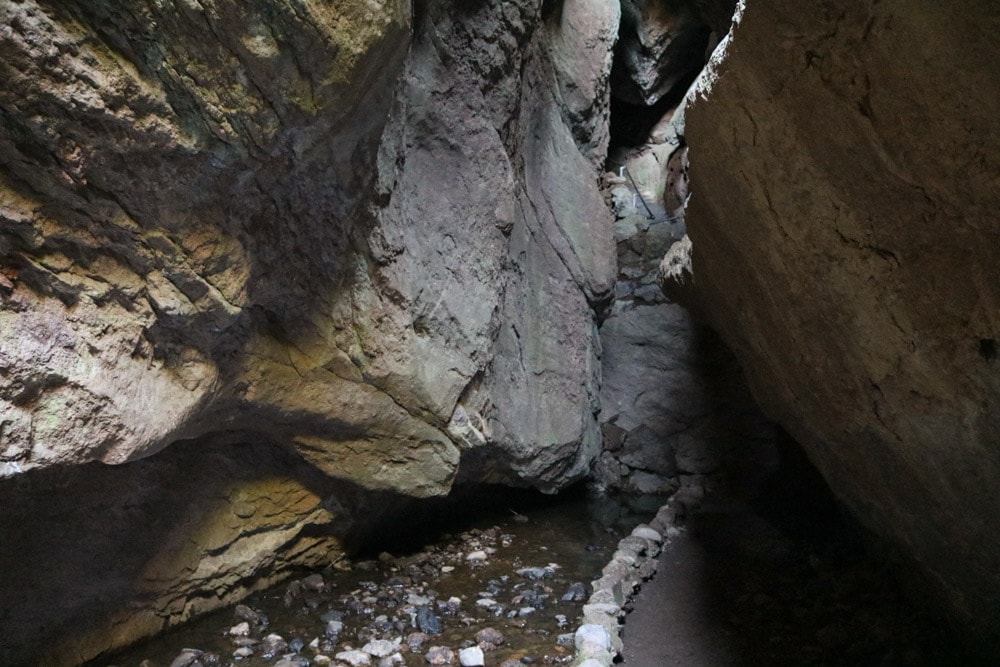
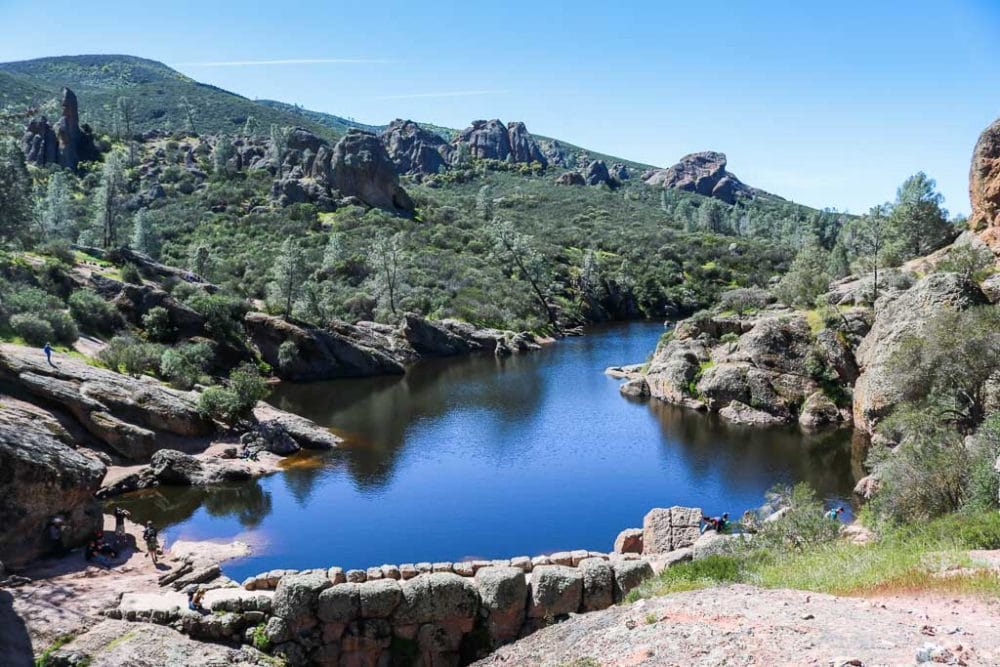
The steep canyons, rock spires, monumental monoliths and boulder-covered caves of Pinnacles National Park in California are the remains of a twenty-million-year-old volcano.
In addition to world-class bird watching—California condors!—Pinnacles also offer some unique cave exploration opportunities. Visitors can hike to and enter rare talus caves in Pinnacles National Park.
The park is home to two major examples of those cave types: the Balconies Cave and the Bear Gulch Cave. The latter is the most popular, accessible via the Bear Gulch Cave Trail.
This remarkable cave is home to a hibernating colony of Townsends’ big-eared bats, which, according to the National Park Service, “rest there in winter and raise their young in the late-spring and summer.” The lower part of the cave is typically open to hikers ten months of the year, usually from mid-July through mid-May.
Other National Park Service Units With Talus Caves
- Yosemite National Park, California
Sea Caves in the National Parks System
Also known as littoral caves, sea caves are the result of the relentless pounding of waves against the rocky shores of large lakes or seas. You can find several spectacular sea caves in various National Park Service units across the United States, from New England to California and the Great Lakes.
Note, however, that to visit and explore sea caves, wherever allowed, you’ll most likely need a sea kayak. These types of caves are usually inaccessible on foot.
- Acadia National Park, Maine
- Apostle Islands National Lakeshore, Wisconsin
- Channel Islands National Park, California
- Pictured Rocks National Lakeshore, Michigan
- Point Reyes National Seashore, California




